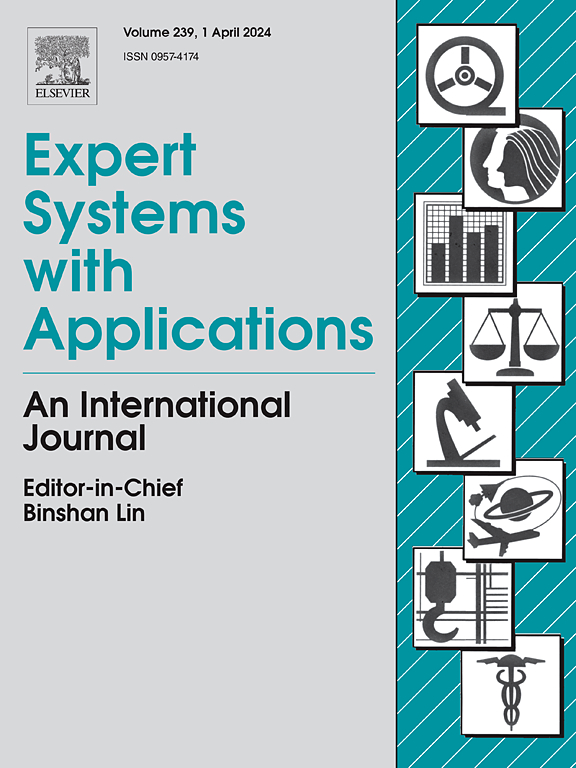具有成本效益的射频(RF)辐射的微电火花加工过程中的智能放电状态检测:集成机器学习和可解释的人工智能
IF 7.5
1区 计算机科学
Q1 COMPUTER SCIENCE, ARTIFICIAL INTELLIGENCE
引用次数: 0
摘要
加工状态监测是通过间接了解各种放电模式和异常事件,保证生产效率和质量的平稳性的一种使能技术。在微细电火花加工(micro- edm)中,识别放电脉冲的主要方法依赖于加工区域附近的电传感,这可能会干扰加工过程。为了提供一种远离加工区域且独立于机器布线的补充方法,本文提出了一种在火花期间使用经济高效且非侵入性射频(RF)信号的微细电火花加工放电状态检测方案。首先采用基于阈值的方法对脉冲进行初步分类,然后进行人工校正,保证数据的可靠性。基于射频信号特征,结合领域知识提取四种特征类别作为机器学习模型的输入。基于树的集成学习方法被应用于预测放电脉冲,XGBoost达到了最高的精度。SHapley加性解释分析表明,射频信号的分布特征对脉冲识别贡献最大,而统计特征的影响较小。此外,将基于ml的分类与深度学习模型进行了比较。所设计的混合结构结合了时间卷积网络(TCN)和门控循环单元,可以提高所有脉冲类型的识别精度,宏观f1得分大于94%。梯度加权类激活映射表明,TCN模块强调介质击穿和放电维护阶段信息的重要性。尽管采样率降低可能导致数据丢失,但关键信号特征保持不变,预测精度下降低于1%。这项研究证明了基于射频的放电状态检测的可行性,提供了一种替代电传感的方法,并为未来电火花加工过程中提高伺服控制和加工效率提供了见解。本文章由计算机程序翻译,如有差异,请以英文原文为准。
Intelligent discharge state detection in micro-EDM process with cost-effective radio frequency (RF) radiation: Integrating machine learning and interpretable AI
Machining state monitoring is an enabling technology that can ensure the smoothness of production efficiency and quality by indirectly understanding various discharge patterns and anomalous events. The predominant method for identifying discharge pulses in micro electrical discharge machining (micro-EDM) relies on electrical sensing near the machining zone, which may interfere with the process. To provide a complementary approach further from the machining zone and independent from machine wiring, this paper proposes a discharge state detection scheme for micro-EDM using cost-effective and non-invasive radio frequency (RF) signals during sparking. A threshold-based method is first employed for preliminary pulse classification, followed by manual correction to ensure data reliability. Based on RF signal characteristics, domain knowledge is incorporated to extract four feature categories as inputs for machine learning (ML) models. Tree-based ensemble learning methods are applied to predict discharge pulses, with XGBoost attaining the highest accuracy. SHapley Additive exPlanations analysis reveals that distribution features of RF signals contribute most to pulse recognition, while statistical features have a smaller impact. Furthermore, ML-based classifications are compared with deep learning models. The designed hybrid architecture combining temporal convolutional networks (TCN) and gated recurrent units, can improve the identification accuracy across all pulse types, with a macro F1-score larger than 94 %. Gradient-weighted class activation mapping shows that TCN modules emphasize the significance of information on dielectric breakdown and discharge maintenance stages. Despite potential data loss from reduced sampling rates, key signal characteristics remain intact, with prediction accuracy degradation below 1 %. This study demonstrates the feasibility of RF-based discharge state detection, offering an alternative to electrical sensing and providing insights for improving servo control and machining efficiency in future EDM processes.
求助全文
通过发布文献求助,成功后即可免费获取论文全文。
去求助
来源期刊

Expert Systems with Applications
工程技术-工程:电子与电气
CiteScore
13.80
自引率
10.60%
发文量
2045
审稿时长
8.7 months
期刊介绍:
Expert Systems With Applications is an international journal dedicated to the exchange of information on expert and intelligent systems used globally in industry, government, and universities. The journal emphasizes original papers covering the design, development, testing, implementation, and management of these systems, offering practical guidelines. It spans various sectors such as finance, engineering, marketing, law, project management, information management, medicine, and more. The journal also welcomes papers on multi-agent systems, knowledge management, neural networks, knowledge discovery, data mining, and other related areas, excluding applications to military/defense systems.
 求助内容:
求助内容: 应助结果提醒方式:
应助结果提醒方式:


